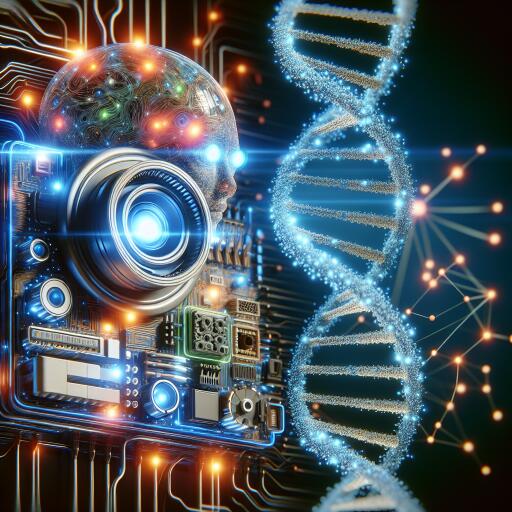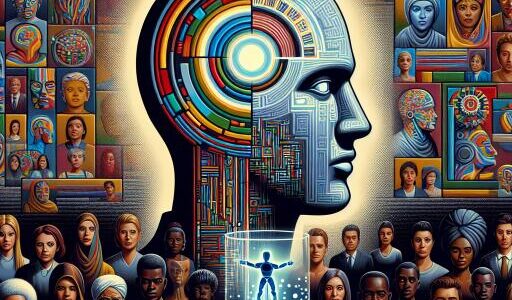AI-Powered Evo-2 Model Generates DNA, Advances Genome Research
The introduction of a groundbreaking artificial intelligence model, known as Evo-2, marks a significant leap forward in the realm of biological research. Developed using an expansive dataset comprising 128,000 genomes from a diverse array of life forms, this AI model possesses the ability to generate entire chromosomes and small genomes from scratch. Researchers are touting its potential to delve into non-coding gene variants linked to diseases, presenting a robust tool for genetic research. This development is poised to elevate genome engineering by deepening our understanding of DNA sequences and their intricate functions.
According to findings published by the Arc Institute, the Evo-2 model is a collaborative endeavor involving Stanford University and NVIDIA. Now accessible via web interfaces, this model offers researchers the capability to create and analyze DNA sequences with heightened precision. Patrick Hsu, a bioengineer at the Arc Institute and the University of California, Berkeley, emphasized during a recent press briefing that Evo-2 is devised as a versatile platform, adaptable to the research requirements of scientists.
Unlike preceding AI models that primarily honed in on protein sequences, Evo-2 has been rigorously trained on genome data, embracing both coding and non-coding sequences. The extensive training set incorporates genomes from humans, animals, plants, bacteria, and archaea, spanning a staggering 9.3 trillion DNA letters. By integrating the complexity of eukaryotic genomes, which feature interspersed coding and non-coding regions, Evo-2’s framework is tailored to enhance its predictive accuracy regarding gene activity.
Anshul Kundaje, a computational genomicist at Stanford University, indicated to Nature that independent verification is essential to fully gauge Evo-2’s capabilities. Preliminary outcomes suggest a high level of performance when predicting the impacts of mutations in genes like BRCA1, associated with breast cancer. The model has also been employed in analyzing the genome of the woolly mammoth, showcasing its proficiency in interpreting complex genetic architectures.
The AI has undergone trials in crafting new DNA sequences, including CRISPR gene editors, as well as bacterial and viral genomes. While earlier iterations of the model produced incomplete genomes, Evo-2 demonstrates notable advancements by generating sequences with greater biological plausibility. Brian Hie, a computational biologist at Stanford University and Arc Institute, acknowledged that while significant progress has been made, further refinements are requisite before these sequences can be seamlessly integrated into living cells.
Researchers envisage Evo-2 as an instrumental aid in designing regulatory DNA sequences that modulate gene expression. Experiments are already in progress to evaluate its predictive capabilities on chromatin accessibility, a factor influencing cell identity in multicellular organisms. Yunha Wang, a computational biologist and CEO of Tatta Bio, suggested that Evo-2’s capacity to derive insights from bacterial and archaeal genomes might pave the way for the design of novel human proteins.
The scientific team driving this project is ambitiously looking to extend beyond protein design, advancing into comprehensive genome engineering. With ongoing enhancements and laboratory validations, Evo-2 could potentially catalyze breakthroughs in synthetic biology and precision medicine. As more researchers embrace and refine its features, the model’s capacity to elucidate genetic regulation and design functional DNA sequences is anticipated to expand.
The ramifications of Evo-2’s innovations are vast, offering a glimpse into the possibility of reshaping the landscape of genomic research and application. The model represents a convergence of computational prowess and biological insight, propelling the scientific community towards new frontiers in understanding and manipulating the fundamental blueprints of life. As these developments unfold, the collaboration underscores the profound impact that AI-driven technologies can have in transforming our approach to genetics and medicine.









